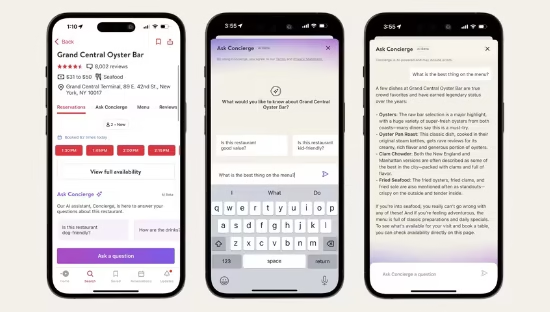
SM-SR: The eSIM Tech No One Talks About (But Everyone Depends On)
Let’s be honest—most people don’t give a second thought to how their phones stay connected to a mobile network. Whether you’re scrolling Instagram in Istanbul or booking a Grab ride in Bangkok, you just expect it to work. But behind that instant connection is an entire system making it happen safely and securely. And one of the quiet but critical components is called Subscription Manager Secure Routing, or SM-SR. Never heard of it? You’re not alone.
SM-SR isn’t something you see in your phone settings or advertised in flashy telecom promos. But if you use an eSIM, it’s working in the background every single time your mobile service kicks in. And right now, it’s becoming more important—and more controversial—than ever.
Let’s unpack what SM-SR actually does, why it matters, and how it’s even playing a role in eSIM restrictions in countries like Turkey.
What is Subscription Manager Secure Routing (SM-SR)?
Alright, first things first: what the heck is SM-SR?
If you’re using a regular SIM card, your mobile identity is stored on a tiny chip. But with eSIMs, your mobile subscription is downloaded and managed digitally. That’s where SM-SR comes in.
In the GSMA-approved eSIM architecture, the Subscription Manager is the system that handles your eSIM profile. It has two key parts:
- SM-DP+ (Subscription Manager – Data Preparation+): Think of this as the storage unit where your mobile operator keeps your eSIM profile, ready for download.
- SM-SR (Subscription Manager – Secure Routing): This is the part responsible for securely sending that eSIM profile to your device, managing it remotely, and ensuring that any commands—like install, update, or delete—are done safely.
In simpler terms: SM-DP+ prepares the data, and SM-SR makes sure it gets to you without being hijacked or tampered with.
Why Is Secure Routing So Important?
You might be wondering, “Why does this even matter to me?”
Here’s why:
- 🔐 It’s about security: SM-SR ensures that the eSIM profile you download comes directly from your carrier—and hasn’t been intercepted or modified along the way.
- 🌍 It enables global connectivity: Whether you’re activating a local eSIM in Europe or a travel eSIM before your trip to Asia, SM-SR makes remote provisioning possible—no physical SIM swapping, no retail store needed.
- 📲 It gives you control: SM-SR allows your mobile operator (or you, via an app) to manage your eSIM profile remotely. You can add a new plan, delete an expired one, or switch networks, all from your phone.
Without SM-SR, the eSIM experience would be far less secure and far less flexible.
How It Actually Works (In Plain English)
Let’s say you buy an eSIM from a provider like Airalo, aloSIM, or Nomad. When you download that eSIM to your phone, a secure communication channel opens between your device and the provider’s SM-SR server. This secure route:
- Authenticates your device
- Delivers the correct mobile profile
- Manages installation and activation
- Ensures that only trusted, verified profiles get through
It’s like FedEx for your digital SIM—except encrypted, certified, and automated.
Local Regulation and SM-SR: The Turkey Example
Here’s where things get tricky. Some countries, like Turkey and India, have started enforcing strict eSIM regulations that require all subscription management—including SM-SR infrastructure—to be hosted locally. In July 2025, the Turkish telecom authority (BTK) blocked access to eight major international eSIM providers, including Airalo, Holafly, Nomad, and BNESIM. The reasoning?
These platforms provision eSIMs using SM-SR servers located outside Turkey, which violates BTK’s data localization rules. Under these rules, only Turkish-based telecoms or certified partners are allowed to manage the secure routing of subscription data within the country. So, even if you already have an eSIM installed before entering Turkey, downloading or activating a new one while in the country may no longer work—because your phone can’t securely communicate with a foreign SM-SR server. This makes SM-SR not just a technical layer but also a regulatory flashpoint in the global mobile landscape.
What This Means in Practice
Whether you’re a traveler, a digital nomad, or someone managing a fleet of connected devices, these kinds of regulations can cause real issues:
- You may not be able to activate or install an eSIM from certain providers while inside restricted countries.
- Even if your eSIM works, it may only work for a limited time (Turkey, for instance, has a 120-day roaming rule).
- Business and IoT users may be forced to work with local telecom partners to stay compliant, especially if they rely on remote provisioning via SM-SR.
What’s Next for SM-SR?
Despite these hurdles, SM-SR is here to stay—especially as the eSIM market continues to explode. What we might see going forward are:
- Localized SM-SR hubs: eSIM providers may need to set up regional infrastructure in compliance-heavy countries.
- Hybrid models: Some providers are exploring partnerships with local MVNOs to allow profile delivery via authorized SM-SR systems.
- Policy battles: The tension between global tech and local regulation isn’t going away. Expect more debates (and possibly lawsuits) over eSIM freedom vs. national control.
TL;DR
- SM-SR (Subscription Manager Secure Routing) is the invisible infrastructure that makes eSIM work—securely delivering and managing your mobile profile.
- It matters for security, remote control, and global roaming.
- But in some countries—like Turkey—local regulations now demand locally hosted SM-SR infrastructure, leading to bans on foreign eSIM providers.
- Expect more localization, regulatory friction, and eSIM infrastructure changes in the coming years.
In the end, SM-SR might be behind the scenes, but it’s quickly becoming a front-line issue in the global battle over mobile freedom, security, and sovereignty.
If you’re in the travel tech or eSIM business, now’s the time to pay attention.










